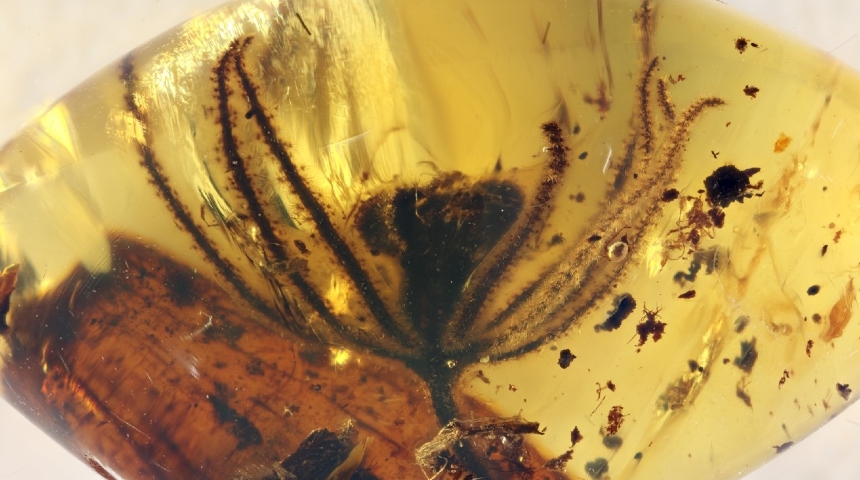
A flower encased in sap that’s part of a family of more than one thousand species worldwide has been found to be 260 million years old.
The discovery paints a picture of flowering meadows seeded by fires millions of years ago, as charcoal was also discovered with the flower fossils.
The Phylica flower at the centre of the research is part of the buckthorn family, or Rhamnaceae, which are found throughout Africa, Australia, North and South America, Asia and Europe. Rhamnaceae produce dry fruits and are closely related to the Vitaceae family, which includes grapevines.
Dr Tianhua He, a molecular geneticist at Murdoch University, and Professor Byron Lamont, an evolutionary ecologist at Curtin University, made the discovery after analysing an ancient flower fossil from Myanmar.
They analysed the DNA of modern-day Phylica and living related plants throughout the world, and used the fossils of Phylica to calibrate the molecular clock for the rest of the family, which set the age of the family at a remarkable 260 million years.
“Fossils provide important evidence for evolution and the adaptation of plants and animals to their environments and an essential tool to estimate the timing of plant evolution,” said Dr He.
“The Phylica fossils preserved in the Burmese amber provided us with an excellent and unique tool to examine the speed of evolution of Rhamnaceae and - with a bit of caution - extrapolate to all flowering plants.”
“Discoveries like this can fundamentally change our view on the origin and evolution of plants on earth and prompt us to re-examine the evolution of life on earth.”
Professor Lamont said the age of the fossil was well beyond botanist expectations.
“It was previously believed that the Phylica evolved about 20 million years ago, and the Buckthorn family less than100 million years ago, so these new dates mean the family of flowering plants are much older than botanists could have possibly ever imagined,” Professor Lamont said.
“Since the Buckthorn family is not even considered an old member of the flowering plants, this means that flowering plants evolved more than 300 million years ago, a staggering 50 million years before the rise of the dinosaurs.
“Flowering plants are the basis of our entire existence, producing oxygen, food, timber, medicine, habitats for animals and the parks and gardens where we live. Thus, it is of great interest to know how long they have been on earth and under what circumstances they arose.”
